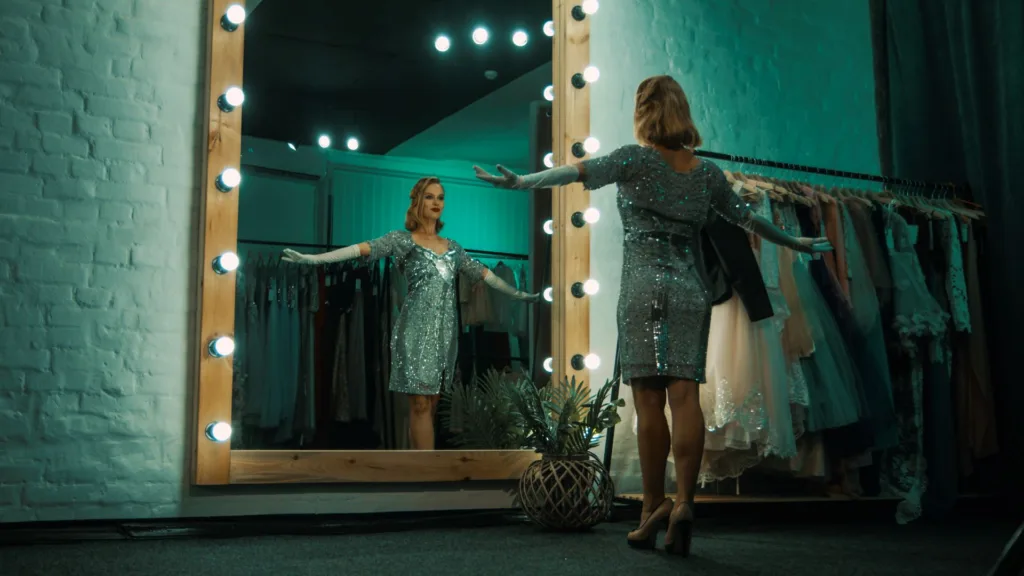
Set the Stage: The Ultimate Talent & Entertainment Management Checklist
By: Shelly Archer, Managing Partner
Read below to build your ultimate entertainment management checklist. There’s no business like show business! If you’ve ever had to book entertainment or talent for your programs, you know precisely what we mean. From gearing up your team to managing talent riders, tech requirements, on-site logistics, and show flow — putting on a show stopping production can feel just as daunting as stepping into the spotlight! As with any complex process, preparedness is key. That’s why Michael Brown, Senior Design and Development Manager, Las Vegas, and I put together the following entertainment management checklist.
Read on to keep grounded and on track at every step so your talent always strikes the right chord.
1) A Checklist to Get the Right Cast of Characters In Place
Let’s start with our favorite part: the people.
☑️ Before finding talent, you’ll need to ensure that you have the right team behind you so everything runs smoothly. The most critical aspects of talent and entertainment management start early on in the process — long before performers arrive on site. For a larger entertainment endeavor, our team structure typically consists of an operations lead for overall coordination, an on-site operations manager for day-of logistics, and an entertainment operations manager to ensure performers’ needs are met.
2) Time for a Tech Check: Tips for Navigating Technical Requirements
The more complex and visually involved your program, the more crucial tech and audio-visual services will become. While it may make sense at first glance to sort this out after your talent has been booked, the opposite is true. Many performers don’t provide their AV support, so you’ll want to get a sense of your venue’s offerings and capabilities first and foremost so you know what you can accommodate. Here are some important considerations to keep in mind when it comes to tech:
☑️ Measure twice, book once.
Once you get in the space, take pictures and measurements, carefully mark up floorplans, and think through your desired show flow. Is there room for strolling entertainment to move throughout the room? Is there enough room for an act to get on the stage or through doors in costume? Is the floor wood or carpet, which is harder to dance on? Understanding what you have to work with is essential before you can design entertainment.
☑️ Performers have technical requirements, too.
Always review performers’ technical requirements with a fine-tooth comb before finalizing contracts. Understanding their needs is crucial to avoid unexpected costs. A reliable DMC partner can help you navigate these details and keep your budget in check.
3) Learn Your Line Items! Exploring Talent Riders and Contracts
When it comes to talent riders and contracts, we’ve seen it all! The following considerations are vital to ensuring that your performers’ needs are met so they can create an unforgettable experience for your attendees. These steps are crucial components of your entertainment management checklist.
☑️ Set Clear Expectations.
Before signing any contract, be upfront about what will be provided and what won’t. Use your DMC’s expertise to ensure your contract lists all accommodations, so there are no surprises later. Be flexible where you can, but firm on any non-negotiables.
☑️ Timing is Crucial.
Performers often need to be on-site early for rehearsals. Plan for this in your schedule, especially for acts like Cirque performers who require extra prep time. By organizing these details early, you’ll avoid last-minute stress and ensure a smooth show.
4) Curtain Call: On-Site Essentials from Rehearsals to Show Time
Ensuring a smooth show means thorough on-site management. Here’s how to make it happen:
☑️ Provide a detailed checklist and scope of the program.
Share a comprehensive production overview with performers well in advance. This should include a show flow timeline, room diagrams, and clear outlines of performance expectations and break schedules. Make sure they know their on-site contact for any needs during the event.
☑️ Give them the ‘who’s who’ of your event.
Give performers a brief on the client, event purpose, objectives, and audience demographics. You can even include photos of VIPs to help them recognize key attendees.
☑️ Get everyone together on the day.
Require all entertainers to attend a pre-event briefing with your operations manager. This is the time to review the show’s flow, address any questions, and walk them through the performance areas.
5) Get Your Greenroom the Greenlight
The importance of catering to greenrooms and/or dressing room requests varies depending on the type of performer you’re working with. Often, walkaround or solo talent will have very few requirements aside from having their basic needs met. But, when working with a celebrity guest, their needs can be more involved and expensive. When planning on accommodations for your performers, keep the following in mind:
☑️ Be fair and flexible.
At 360DG, we’re in tune with performers’ needs. We aim to provide a comfortable dressing room equipped with essentials like tables, chairs, and refreshments. If space is limited, we set up private changing areas. In destinations with paid parking, we even cover parking costs for entertainers to ease any logistical headaches.
☑️ Support the support team.
Don’t forget the talent handlers, wardrobe staff, and other behind-the-scenes crew. Ensure there’s a space for them to relax and regroup.
☑️ Roll out the welcome mat.
Making the talent feel welcome right away is one of the best ways to get the vibe right before preparations begin. Assign someone to greet your entertainers on arrival and direct them to their greenroom or shared dressing room.
6) Manage the Mischief
To wrap things up, we figured we’d run through this final entertainment management checklist, covering common do’s and don’ts for managing talent and entertainment like a pro.
☑️ DO: Define who is allowed to attend the event. Performers and acts often have handlers, but you don’t want them to bring an unnecessary entourage to watch them perform. Making this clear ahead of time will enable you to avoid a potential security snafu later on.
🚫DON’T: Let performers take photos or videos of the event without asking. Many corporate programs include branding components or proprietary company information that shouldn’t be shared on social media. Photography and video disclaimers should be reviewed during the booking process and again on-site prior to the performance so there’s no question about what’s allowed.
☑️DO: Treat the dressing or green room as the artist’s safe, private place. As opposed to accosting talent or shouting out instructions, it’s always best to communicate directly with the talent’s handler or assistant outside the dressing room for any updates or changes to the event schedule. It’s their job to communicate those details back to the performer in a way that won’t disrupt their preparation process.
☑️DO: Over-communicate every step of the way! From the beginning of the booking process through to contracting and show day, be sure to present talent with the information they need in a thorough and organized manner. This is the best way to discover potential issues early on so they can be resolved before showtime.
🚫DON’T: Tolerate rude or difficult behavior — even from A-listers. Entertainers often have big personalities. However, you’ve hired them to do a job, and part of that is working seamlessly with your team. There’s no excuse for mistreating any member of the production, venue, or hotel staff. If the talent’s needs have been met and you’ve set them up to succeed, you shouldn’t need to deal with any ‘diva’ behavior. If you do encounter this type of attitude, empower your team to handle it quickly and professionally so the talent knows what’s appropriate and what’s not.
🚫DON’T: Make it difficult or unsafe for your talent to do their job by putting their dressing or green room in a back hallway, kitchen, or similar area far from the performance area. While you may not always be able to provide pristine private accommodations, you need to make sure that any place they are spending time is clean, quiet, safe, and secure. Be sure to appropriately set expectations by communicating the backstage situation with your talent and their staff before arrival so there are no surprises.
Drop the curtain, because that’s a wrap for now! While accommodating and managing talent can feel like a whole song and dance, practice and preparedness are key. I hope this entertainment management checklist will help you keep your feet on the ground the next time you need to handle performers. When in doubt, reach out! We’d love to discuss how 360DG can help. In the meantime, we’ll be waiting in the wings cheering you on.







 "/>
"/>
 "/>
"/>
 "/>
"/>